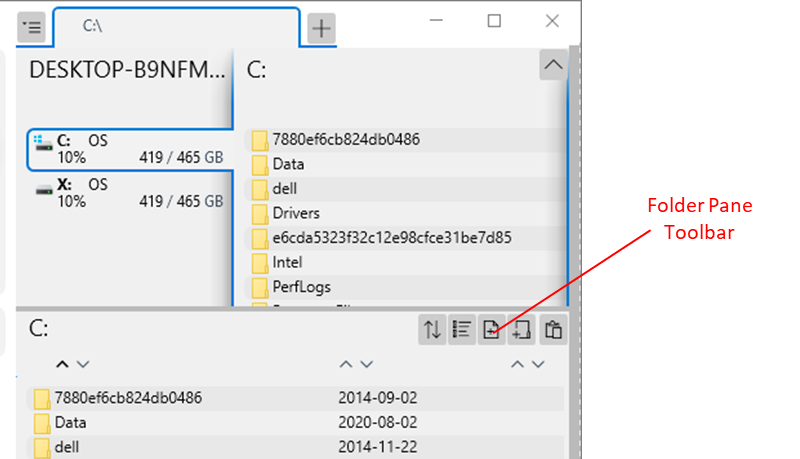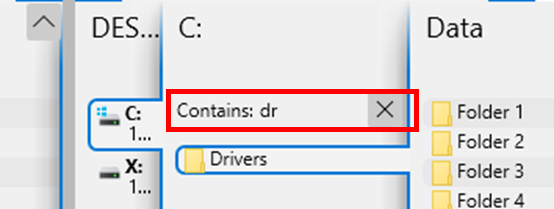Basic folder and file operations
6. Basic folder and file operations
OneCommander allows all the basic folder and file operations that you would expect from a file manager:
- Open folders or files by double-clicking on them (you can change this to a single click in Settings > Other) or pressing Enter. Ctrl+Enter for "Open with..." dialog.
- Move/copy files using
- Mouse: Drag and drop between browsers or to and from other Windows apps (to copy, hold Ctrl key down while dragging). Note that OneCommander drag and drop works a little differently from Windows File Explorer.
- Dragging a file or folder in OneCommander will always move it. To copy, you must always hold the Ctrl key down.
- If you prefer the Explorer's inconsistent way, you can change this in Settings.
- OneCommander attaches a label to the file or folder being dragged to tell you whether it's being moved (red label) or copied (green label). Hold Alt to show the menu to chose the additional options.
- Keyboard:
- Cutting, copying, and pasting: Cut (Ctrl+X), Copy (Ctrl+C), and Paste (Ctrl+V) - same as everywhere else on Windows
- Copying and moving between Browsers in dual-pane layouts: Move (Alt+M); Copy (Alt+C)
- Access the full set of Windows context menu items by right-clicking on a folder or file.
- Create new folders: click on the
 button (or Ctrl+Shift+N) in the Folder Pane Toolbar:
button (or Ctrl+Shift+N) in the Folder Pane Toolbar:


- Create a new file from a template: click on the
 button and select a template, or press Ctrl+N to open template dialog; you can select from a number of popular file types to create a new file of that type in the current folder. You can create your own templates
button and select a template, or press Ctrl+N to open template dialog; you can select from a number of popular file types to create a new file of that type in the current folder. You can create your own templates - Filtering list of folders or files: with the cursor in a folder column or folder pane, start typing the name of the folder or file; folders or files not containing the string of characters you've typed are filtered out, so it also is a quick way of searching for a folder or file in a long list. At the top of the column or pane OneCommander records what you've typed; cancel the filter by clicking the "X" or pressing the Esc key:

Pressing a single letter will show files starting with that letter (not containing that letter, since it wouldn't be useful), with 2 or more letters it will show all files containing that string of letters (not just start with those letters). This is only for current folder (not subfolders). For subfolders search, press F3 to search starting from current folders and through all subfolders.
Note that the Spacebar key can't be used for filtering, because it's used for previewing the selected item:
- Preview a file by pressing Space.
- You can edit the information columns in the by clicking on the
 button in the Folder Pane Toolbar and selecting Edit File Views.
button in the Folder Pane Toolbar and selecting Edit File Views.